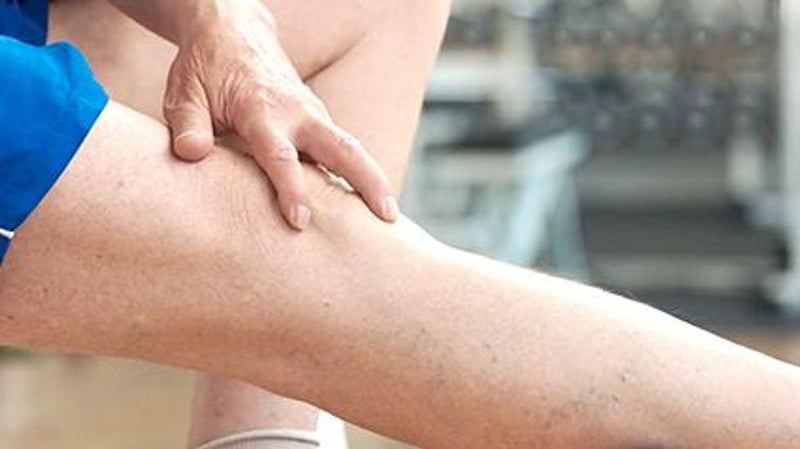CALL THE STORE TODAY FOR AVAILABILTY AND SCHEDULE AN APPOINTMENT OR SIMPLY CLICK ON THE LINK BELOW TO SIGN UP ONLINE!!
CLICK HERE TO COMPLETE CONSENT FORM
CLICK HERE TO SCHEDULE A VACCINE
Get Healthy!

- Posted March 10, 2022
Lymphedema in Legs Strikes 1 in 3 Female Cancer Survivors
After surviving cancer, many older women suffer severe leg swelling that interferes with everyday life, a new study finds.
About one-third of older women develop this chronic condition - called lymphedema - after treatment for colon, uterine or ovarian cancer, according to the study.
"Older cancer survivors who experience lower extremity lymphedema are at risk for decreases in physical functioning and ability to perform activities of daily living," said senior researcher Electra Paskett. She is a professor of cancer research at Ohio State University in Columbus.
The condition can affect cancer survivors' quality of life and it has implications for overall death rates, Paskett added.
Lymphedema is a chronic condition that causes swelling, heaviness, pain, discomfort and decreased mobility in legs and arms. It is a common side effect of cancer treatment.
The disorder affects a person's ability to walk or stand for long periods or to lift heavy objects. It can also cause persistent infections in the arms, hips or legs that, in severe cases, can result in loss of a limb.
Dr. Susan Maltser, director of cancer rehabilitation at Northwell Health in New Hyde Park, N.Y., said lymphedema can happen when some cancer treatments disrupt the body's lymph system, which helps maintain fluid levels in the body.
"When a patient has surgery for cancer, lymph nodes are frequently taken out in order to prevent the cancer from spreading," Maltser said. "In addition, many patients have radiation therapy, which can target lymph nodes as well."
When lymph nodes are either removed or affected by radiation therapy, it creates a backup of lymphatic fluid, which causes swelling, said Maltser, who had no part in the study.
Men, too, can develop lymphedema after cancer treatment, she added.
Early detection and treatment are keys to managing lymphedema.
Paskett suggested that "older cancer survivors need to be screened for lower extremity lymphedema, and if there is swelling, they should be promptly referred to physical therapy for treatment and impact on physical functioning."
For the study, her team collected data on 900 postmenopausal women (average age: 79) with endometrial, colon or ovarian cancer. On average, their cancer had been diagnosed nine years earlier.
Compared with women who did not suffer from lymphedema in their legs, those who did reported significantly impaired physical function, the researchers found.
That impairment greatly affected colon cancer survivors. Among them, nearly 22% had significantly weakened physical function and needed help with daily activities, such as walking, standing for long periods or lifting heavy objects.
This risk was lower in survivors of endometrial or ovarian cancer.
Maltser said treatment for lymphedema has two parts and is best done by a certified lymphedema therapist, usually a physical or occupational therapist.
"The first part is specialized massage through very specific lymphatic tracts to get the lymphatic fluid out of the affected arm or leg and circulating through the body," she said.
The second part is compression. "If somebody has lymphedema in their arm, we do a compression sleeve. If they have lymphedema in their leg, it's a compression stocking. If it's in their groin, it's compression shorts," Maltser said.
Unfortunately, she added, these compression garments are not covered by Medicare, the federal health insurance program for U.S. seniors.
"[It] does not cover the sleeves and the stockings that the patients need to use for life," Maltser said. "So this is very difficult for our patients in underserved communities who cannot afford these very expensive garments."
Because treatment is most effective when begun early, she urged patients to be on the lookout for the early signs of lymphedema, including swelling but also heaviness, aching and a feeling of discomfort in the affected limb.
Maltser said doctors should tell their patients about the potential of developing lymphedema before their cancer treatment.
"We don't want patients to wait until their arm or leg blows up and is swollen to let their doctor know. We want patients to be educated prior to having surgery," she said.
Lymphedema can be managed, but it never goes away. "But," Maltser said, "we can get someone to where it's almost like they don't have it."
The research was published online March 9 in JAMA Network Open.
More information
For more on lymphedema, head to the U.S. National Cancer Institute.
SOURCES: Electra Paskett, PhD, professor, cancer research, Ohio State University, Columbus; Susan Maltser, DO, director, cancer rehabilitation, Northwell Health, New Hyde Park, N.Y.; JAMA Network Open, March 9, 2022, online






